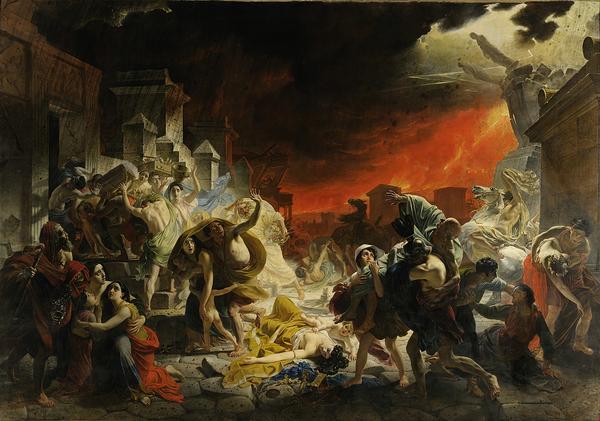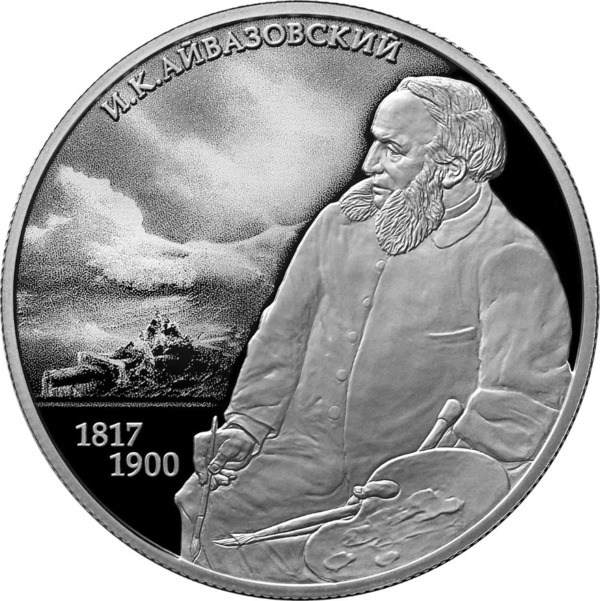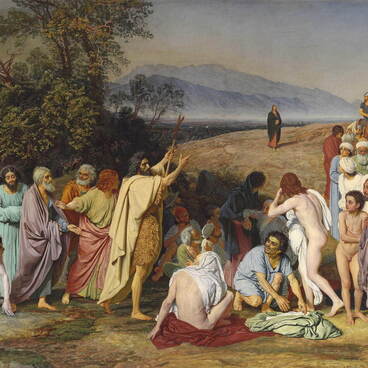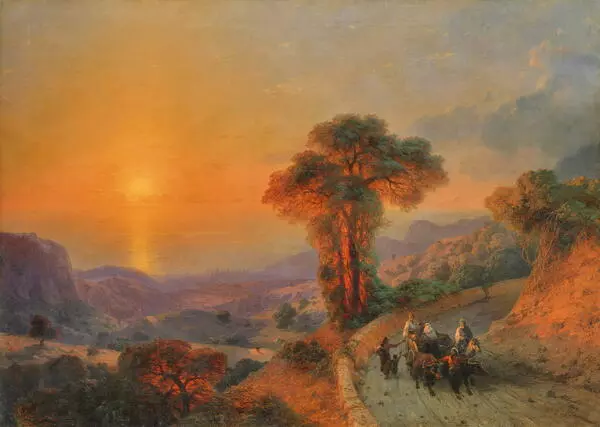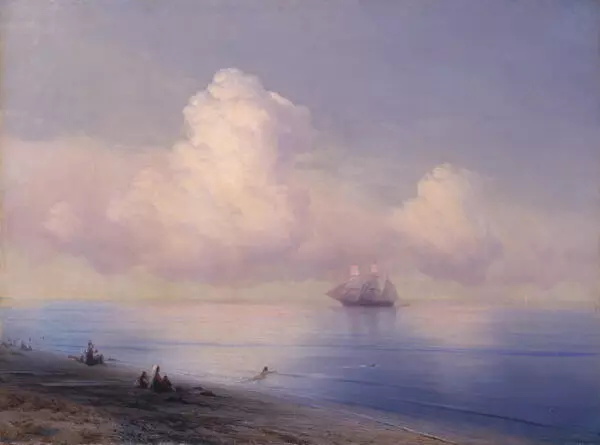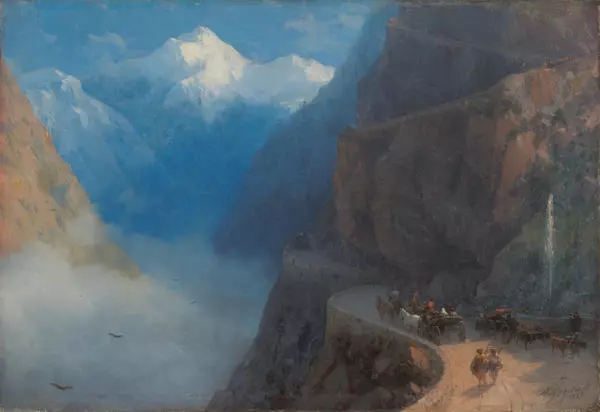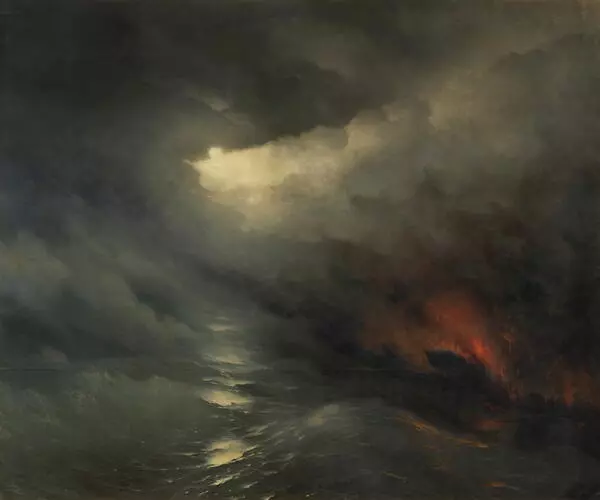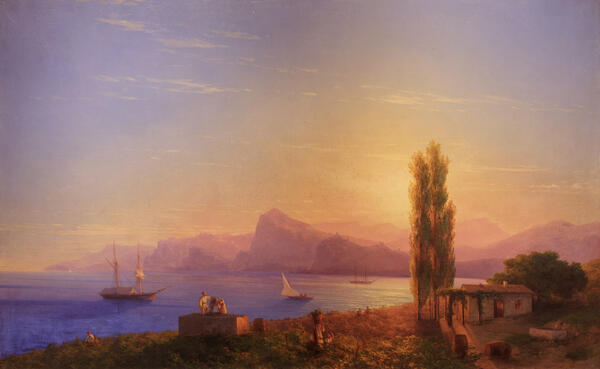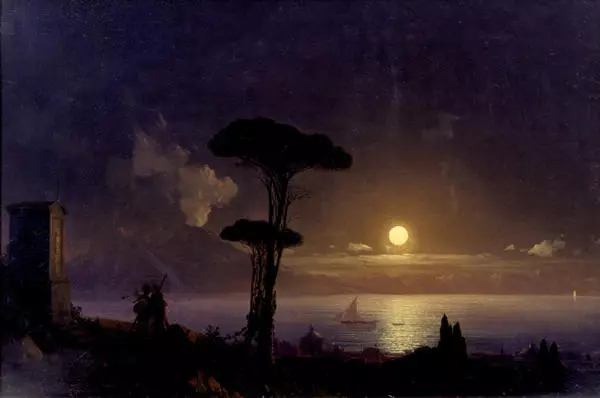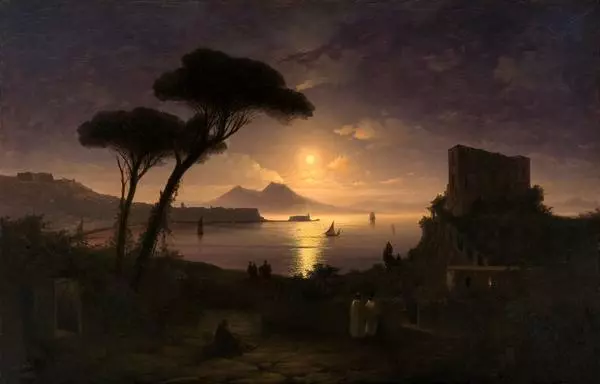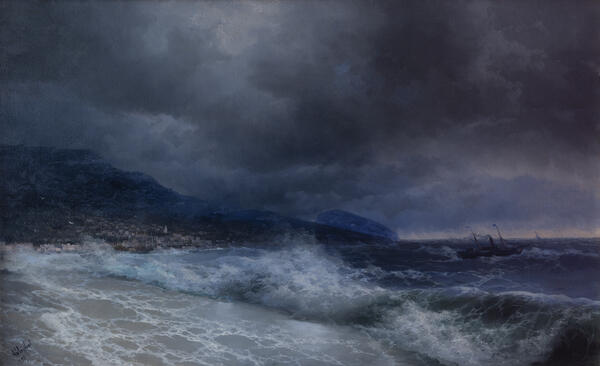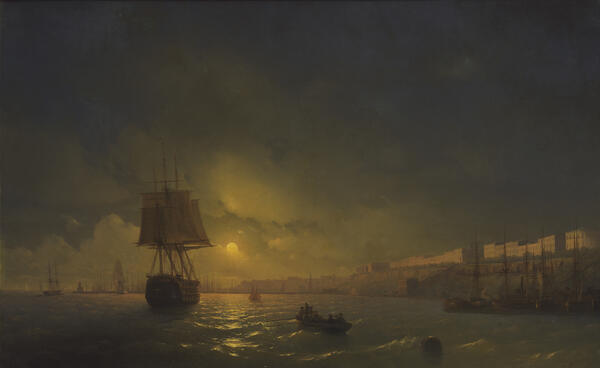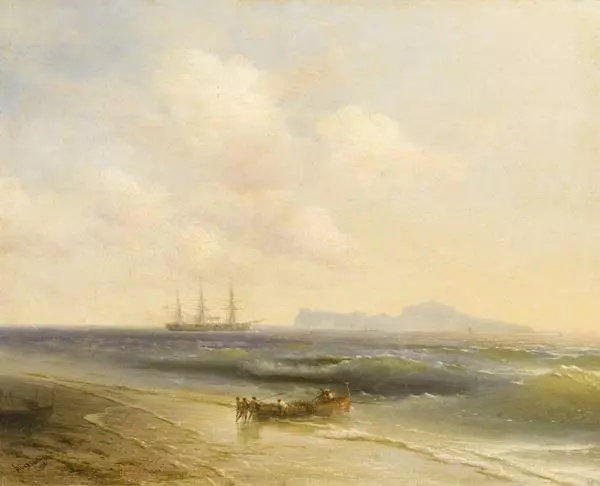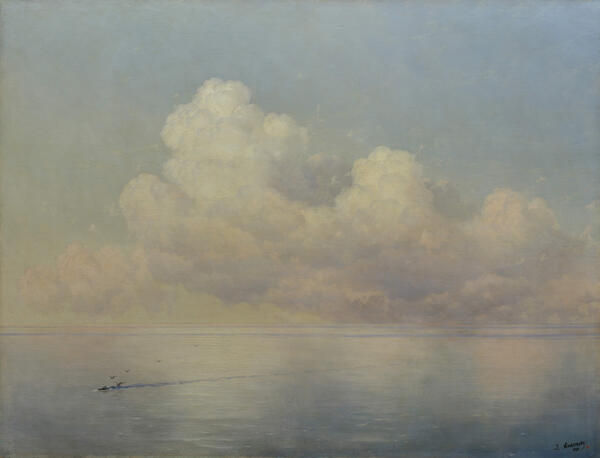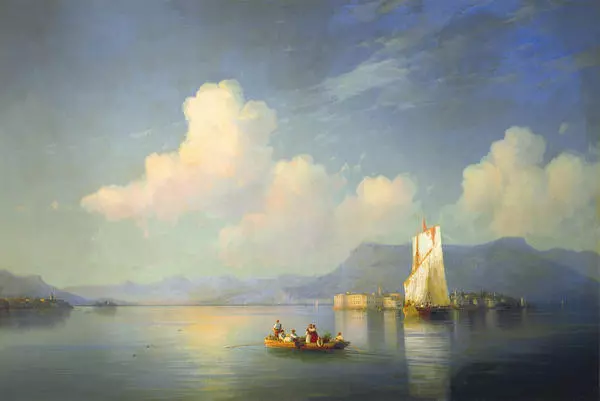According to the legends of seamen and fisherman, the ninth wave — is the, so called, perfect storm. In the Russian language it is synonymous to ‘danger’ or ‘ultimate peak’. It is this very moment, that Aivazovsky captured in one of his famous works of art.
Ninth wave
Время создания
1850
Размер
221x332 cm
Техника
Canvas, oil on canvas
Коллекция
399
Открыть в приложении#6
Ivan Aivazovsky
Ninth wave
#4
#7
The artist took to travelling across Europe around the 1840ies. In the autumn of 1844, the ship Aivazovsky was sailing on was caught in a terrible storm. It happened in the Bay of Biscay. European newspapers reported the artist’s death, but, luckily, this was not the case. It was then, probably, that the artist saw the real ninth wave.
#8
The painting was created by the master in his Feodosiya studio in 1850. The master always painted by memory, creating only sketches in the out-of-doors. He considered it impossible to paint from nature, for nature never keeps still. In his words: “The movements of natural elements are intangible and elusive for the artist”s brush”.
Despite the large size of his paintings — two by three meters — Aivazovsky completed his work on it within 11 days. He always worked a great deal and quite fast. He created more than six thousand paintings. Dostoyevsky compared the marine painter with the write Alexander Dumas, the elder, who was well-known for his working capacity and efficiency.
#9
The dramatic subject of the picture is characteristic of the Romantics. The vessel was shattered in the storm, the sailors clinging desperately to the remains of the mast. The storm is still raging and the most dangerous ninth wave is hovering over them. But it is already morning, the sun is rising, its warm shining light giving rise to hope for salvation.
#10
Bright, slightly unrealistic colours are also features of the Romantics. The artist Ivan Kramskoy wrote to Pavel Tretiakov, the gallerist:
“Aivazovsky must have some secret of mixing paints …, I have not seen such clear and bright tones even on the shelves of paint stores and oileries”.
#11
The “Ninth wave” became the pinnacle of success in the artist’s romantic period. The 33-year-old artist was, by that time, quite well-known both in Russia and abroad, he had received a few gold medals and was conferred the title of Academic of the Imperial Art Academy. The ‘Ninth wave’ immediately gained success and was recognized as a masterpiece.
#12
In its popularity the ‘Ninth wave’ could only be compared with ‘The Last Day of Pompeii’, painted by Karl Brullov, who had a great influence on Aivazovsky. People would queue for hours to see the painting, coming back to see the painting more than once.
Karl Brullov (1799-1852). ‘The Last Day of Pompeii’, canvas, oil on canvas. 1827-1833. State Russian Museum.
#13
Nicholas I bought the ‘Ninth wave’ for the Hermitage. The Emperor was very fond of Aivazovsky’s paintings and philanthropized his art. The painter Kirill Lemoch (Karl Lemoch) recollected Nicholas I saying: “Aivazovsky! I am the ruler on land, and you are the ruler of the sea! “.
#14
The painting became part of the first collection of the Russian Museum, opened in 1898. It became a “business card”, of sorts, for Aivazovsky. The “Ninth wave” was printed on stamps, post-cards. Silver coins with the artist’s image against the background of the famous painting were minted to commemorate the 200 anniversary of his birth.
The commemorative coin of the Bank of Russia minted to celebrate the 200 anniversary of the birth of Ivan Aivazovsky.
#15
State Russian Museum
читать дальшескрыть
00:00
00:00
1x
Ninth wave
Время создания
1850
Размер
221x332 cm
Техника
Canvas, oil on canvas
Коллекция
399
Открыть в приложении
Поделиться


